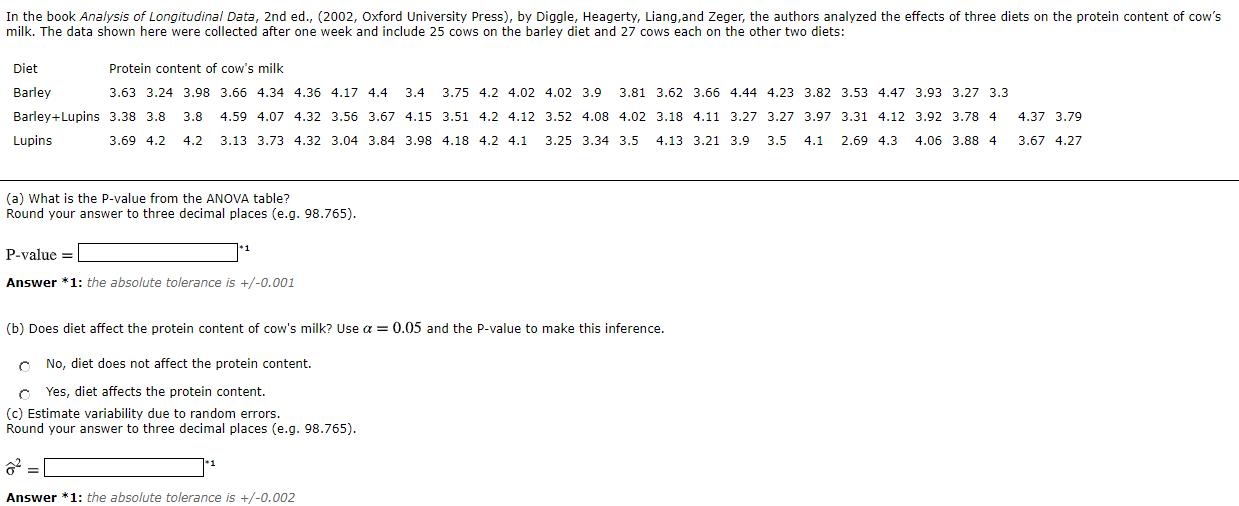Answered step by step
Verified Expert Solution
Question
1 Approved Answer
In the book Analysis of Longitudinal Data, 2nd ed., (2002, Oxford University Press), by Diggle, Heagerty, Liang, and Zeger, the authors analyzed the effects

In the book Analysis of Longitudinal Data, 2nd ed., (2002, Oxford University Press), by Diggle, Heagerty, Liang, and Zeger, the authors analyzed the effects of three diets on the protein content of cow's milk. The data shown here were collected after one week and include 25 cows on the barley diet and 27 cows each on the other two diets: Diet Barley Protein content of cow's milk 3.63 3.24 3.98 3.66 4.34 4.36 4.17 4.4 3.4 3.75 4.2 4.02 4.02 3.9 3.81 3.62 3.66 4.44 4.23 3.82 3.53 4.47 3.93 3.27 3.3 Barley+Lupins 3.38 3.8 3.8 Lupins 4.59 4.07 4.32 3.56 3.67 4.15 3.51 4.2 4.12 3.52 4.08 4.02 3.18 4.11 3.27 3.27 3.97 3.31 4.12 3.92 3.78 4 3.69 4.2 4.2 3.13 3.73 4.32 3.04 3.84 3.98 4.18 4.2 4.1 3.25 3.34 3.5 4.13 3.21 3.9 3.5 4.1 2.69 4.3 4.06 3.88 4 4.37 3.79 3.67 4.27 (a) What is the P-value from the ANOVA table? Round your answer to three decimal places (e.g. 98.765). P-value= +1 Answer *1: the absolute tolerance is +/-0.001 (b) Does diet affect the protein content of cow's milk? Use a = 0.05 and the P-value to make this inference. No, diet does not affect the protein content. Yes, diet affects the protein content. (c) Estimate variability due to random errors. Round your answer to three decimal places (e.g. 98.765). Answer *1: the absolute tolerance is +/-0.002
Step by Step Solution
There are 3 Steps involved in it
Step: 1

Get Instant Access to Expert-Tailored Solutions
See step-by-step solutions with expert insights and AI powered tools for academic success
Step: 2

Step: 3

Ace Your Homework with AI
Get the answers you need in no time with our AI-driven, step-by-step assistance
Get Started


